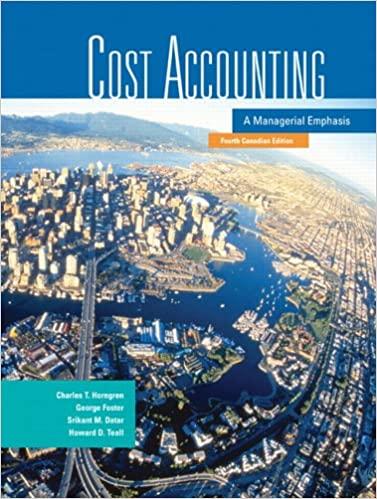Alternative joint-cost-allocation methods, further-process decision. The Wood Spirits Company produces two products, turpentine and methanol (wood alcohol),
Question:
Alternative joint-cost-allocation methods, further-process decision. The Wood Spirits Company produces two products, turpentine and methanol (wood alcohol), by a joint process. Joint costs amount to $144,000 per batch of output. Each batch totals 40,000 litres: 25 A methanol and 75% turpentine. Both products are processed further without gain or loss in volume. Separable processing costs are methanol, $0.90 per litreturpentine, $0.60 per litre. Methanol sells for $6.30 per litre. Turpentine sells for
$4.20 per litre. F Required 1. How much joint costs per batch should be allocated to turpentine and to methanol, assuming that joint costs are allocated on a physical-measure (number oflitres at splitoff point) basis?
2. Ifjoint costs are to be assigned on an NRV basis, how much joint cost should be assigned to turpentine and to methanol?
3. Prepare product-line income statements per batch for requirements 1 and 2. Assume no beginning or ending inventories.
4. The company has discovered an additional process by which the methanol (wood alcohol) can be made into laboratory ethanol. The selling price of this product would be $18 a litre. Additional processing would increase separate costs $2.70 per litre (in addition to the $0.90 per litre separable cost required to yield methanol). The com¬
pany would have to pay excise taxes of 20% on the selling price of the product.
Assuming no other changes in cost, what is the joint cost applicable to the ethanol (using the NRV method)? $hould the company produce the ethanol? $how your computations.
Step by Step Answer:

Cost Accounting A Managerial Emphasis
ISBN: 9780131971905
4th Canadian Edition
Authors: Charles T. Horngren, George Foster, Srikant M. Datar, Howard D. Teall





